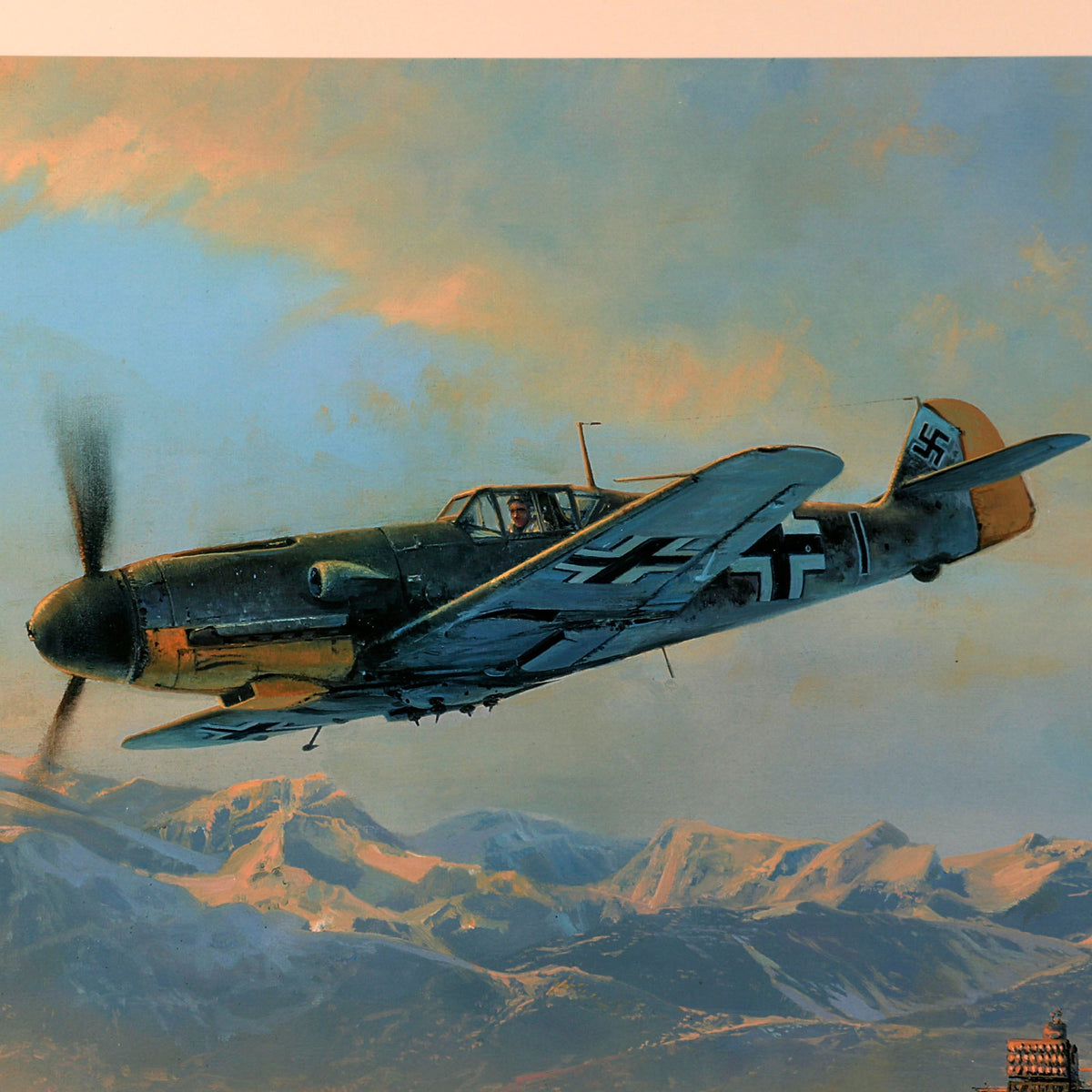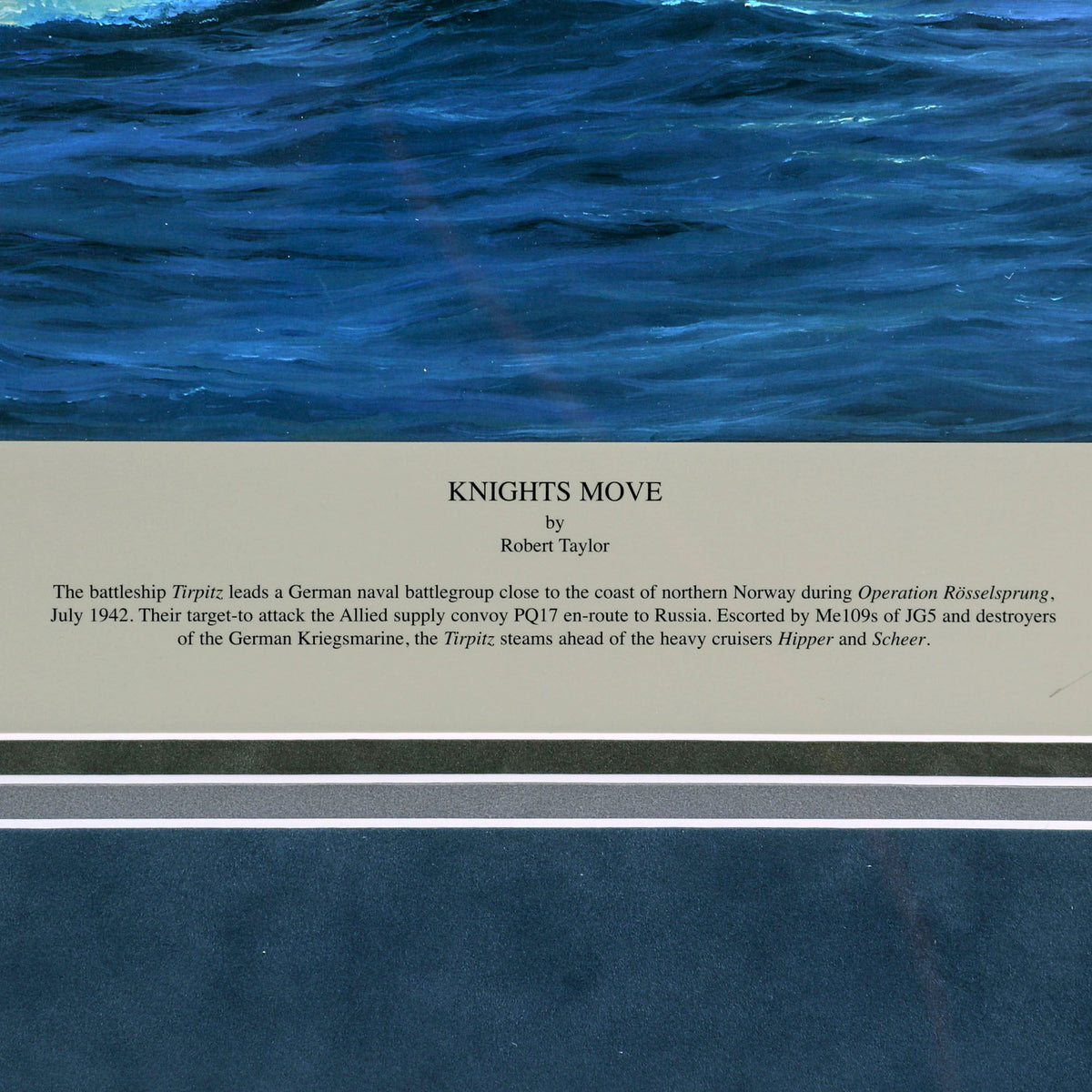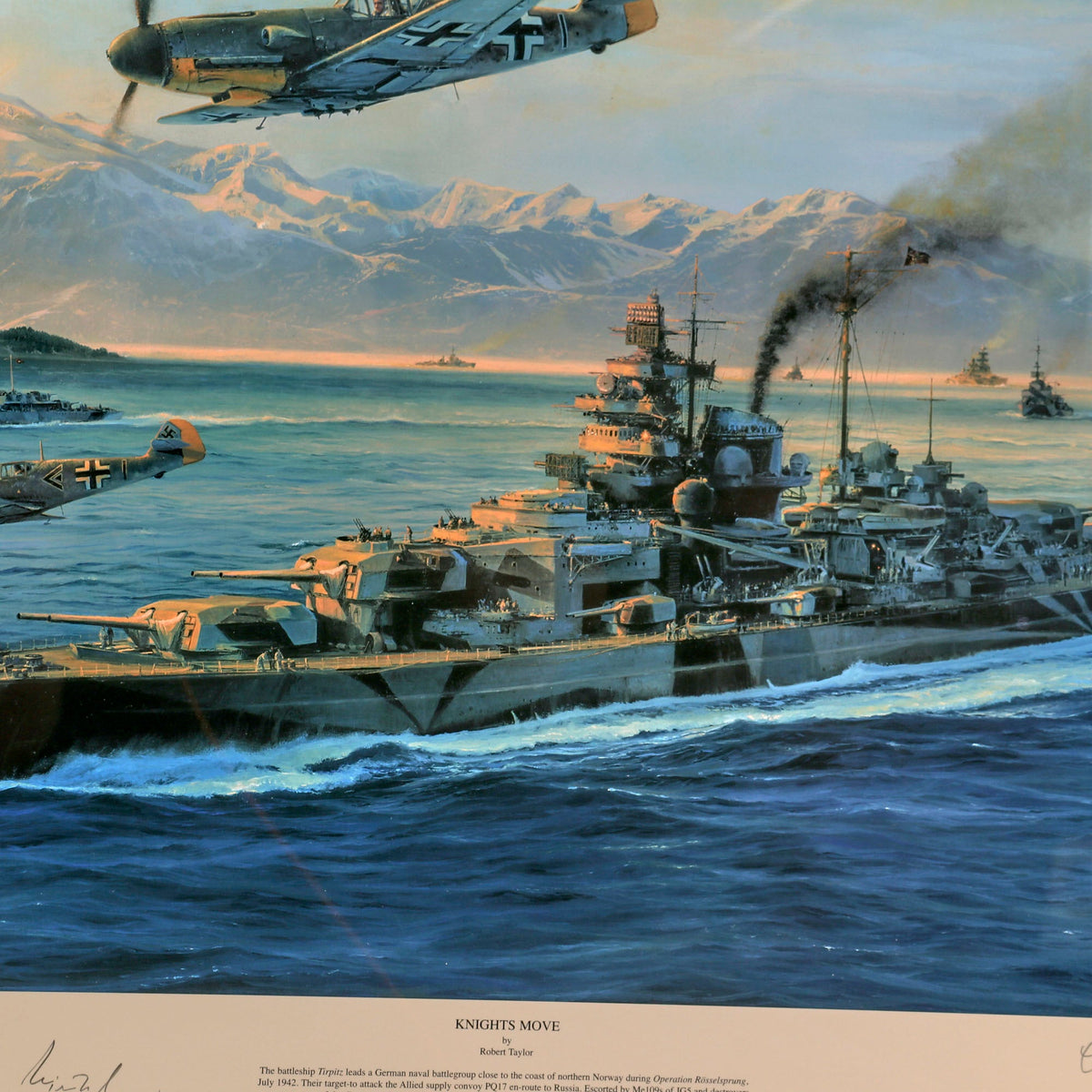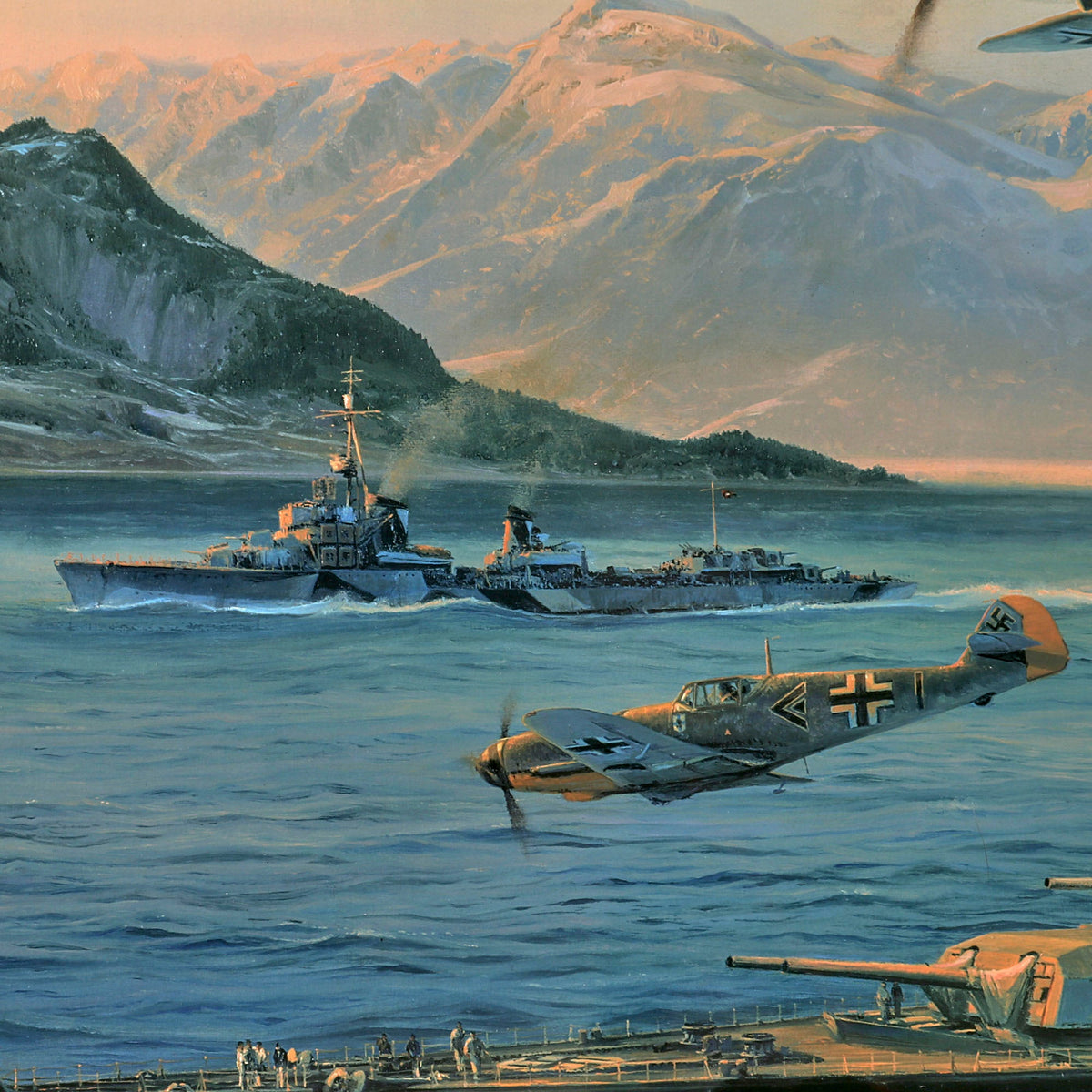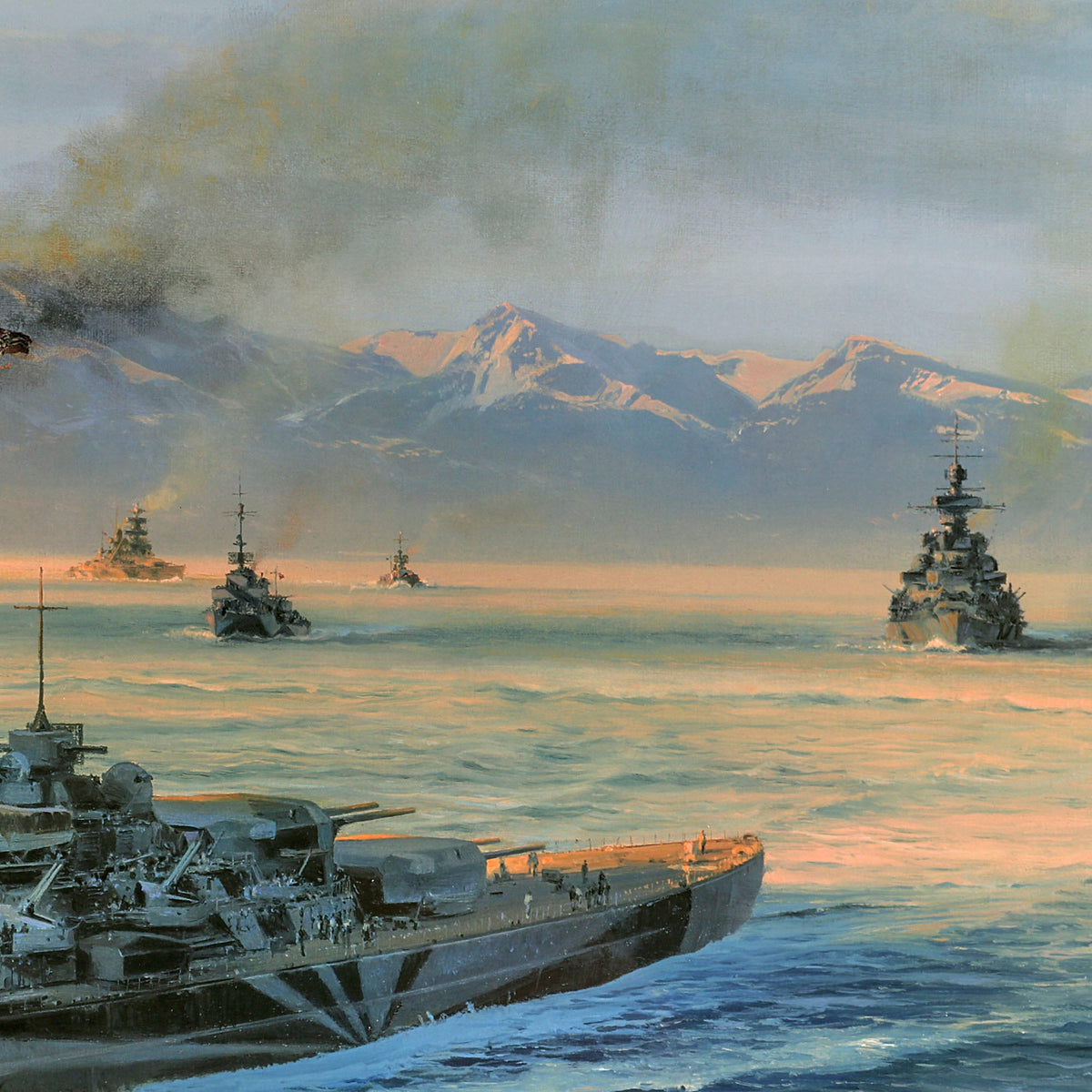Original Artwork Print: “Knights Move” Painting of The Battleship Tirpitz during Operation Rösselsprung; Signed by Artist and WWII German Kriegsmarine Officers – 42” x 29”, in Museum Grade Frame Original Items
$ 695,00 $ 208,50
Original Item: Only One Available. Robert Taylor’s painting KNIGHTS MOVE shows the battleship Tirpitz under the command of Admiral Schniewind, in company with battleships Scheer and Hipper, setting sail during “Operation Rosselsprung”, destined for the open sea and the North Atlantic convoy traffic.
Messerschmitt Me109s of JG5, based at Petsamo, provide overhead cover while flotilla escort vessels make up the fearsome armada. The magnificent Norwegian mountains provide a spectacular backdrop this comprehensively realistic and stirring World War Two image.
Each copy of Knights Move was been signed by the artist as well as the following Kriegsmarine Officers from WWII:
Leutnant Zur See WILLIBALD VÖLSING
Fänrich ARNOLD SCHROEDER
Oberleutnant ERNST SCHEUFELE
Major ERICH RUDORFFER KC WITH OAK LEAVES AND SWORDS
A great display item ready for further research and display.
Operation Rösselsprung was a combined airborne and ground assault by the German XV Mountain Corps and collaborationist forces on the Supreme Headquarters of the Yugoslav Partisans in the Bosnian town of Drvar in the Independent State of Croatia during World War II. It was launched 25 May 1944, with the goal of capturing or killing Partisan leader Marshal Josip Broz Tito and destroying the headquarters, support facilities and co-located Allied military missions. It is associated with the Seventh Enemy Offensive (Serbo-Croatian: Sedma neprijateljska ofenziva) in Yugoslav history, forming part of the Seven Enemy Offensives historiographical framework. The airborne assault itself is also known as the Raid on Drvar (Serbo-Croatian: Desant na Drvar).
Operation Rösselsprung was a coup de main operation, involving direct action by a combined parachute and glider-borne assault by the 500th SS Parachute Battalion and a planned subsequent link-up with ground forces of the XV Mountain Corps converging on Drvar. The airborne assault was preceded by heavy bombing of the town by the Luftwaffe. The ground forces included Home Guard forces of the Independent State of Croatia along with collaborationist Chetniks. Tito, his principal headquarters staff and the Allied military personnel escaped, despite their presence in Drvar at the time of the airborne assault. Fierce Partisan resistance in the town itself and along the approaches to Drvar contributed to the failure of the mission. Other factors included the German intelligence agencies refusing to share the limited information available on Tito’s exact location, and the lack of contingency planning by the commander of the German airborne force.
Fast Shipping with Professional Packaging
Thanks to our longstanding association with UPS FedEx DHL, and other major international carriers, we are able to provide a range of shipping options. Our warehouse staff is expertly trained and will wrap your products according to our exact and precise specifications. Prior to shipping, your goods will be thoroughly examined and securely secured. We ship to thousands clients each day across multiple countries. This shows how we're dedicated to be the largest retailer on the internet. Warehouses and distribution centres can be located throughout Europe as well as the USA.
Note: Orders with more than one item will be assigned a processing date depending on the item.
Before shipping before shipping, we'll conduct a thorough inspection of the items you have ordered. Today, the majority of orders will be delivered within 48 hours. The delivery time will be between 3-7 days.
Returns
The stock is dynamic and we cannot completely manage it because multiple stakeholders are involved, including our factory and warehouse. So the actual stock may alter at any time. It's possible that you may not receive your order once the order has been made.
Our policy is valid for a period of 30 days. If you don't receive the product within 30 days, we are not able to issue a refund or an exchange.
You can only return an item if it is unused and in the same state as the day you received it. You must have the item in its original packaging.
Related products
Uncategorized
Uncategorized
Uncategorized
Uncategorized
Australian WWII Owen MK1 Machine Carbine SMG Custom Fabricated Replica with Sling Original Items
Uncategorized
Armoured Fighting Vehicles of the World: AFVs of World War One (Hardcover Book) New Made Items
Uncategorized
Uncategorized
Uncategorized
Uncategorized
Uncategorized
Uncategorized
Uncategorized
Uncategorized
Uncategorized
Uncategorized

